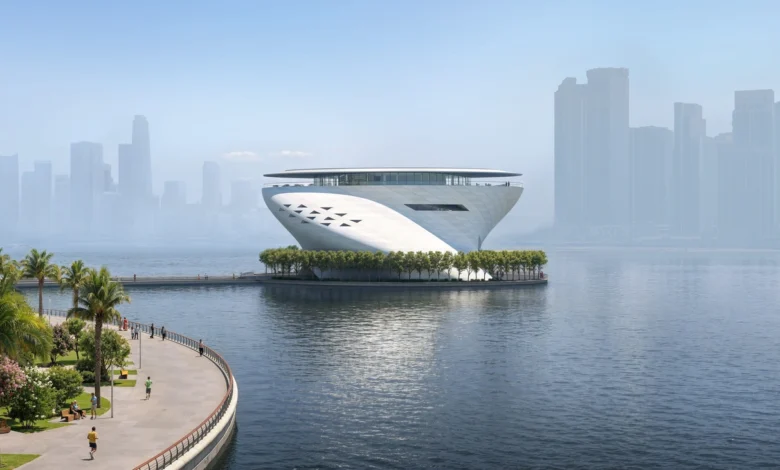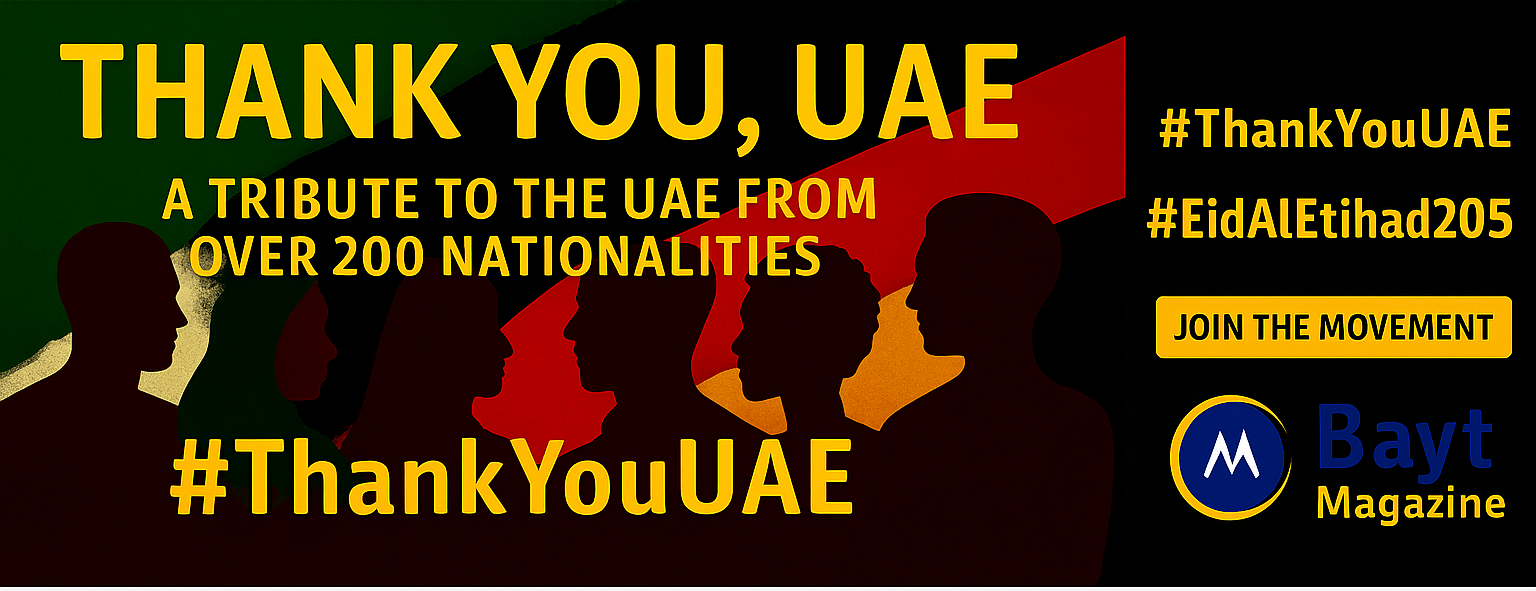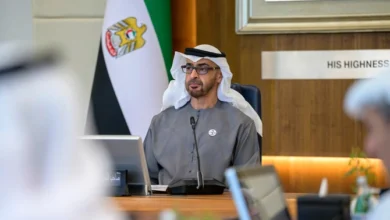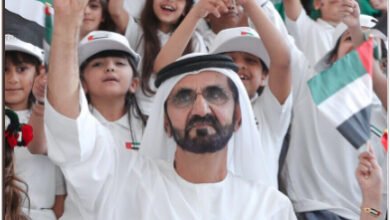
Tadao Ando Unveils Floating Museum Marvel in Dubai
Tadao Ando, the prominent Japanese architect, will design the striking Dubai Museum of Art that appears to float above Dubai Creek’s waters. Sheik Mohammed bin Rashid Al Maktoum witnessed the reveal of this ambitious cultural landmark on October 25, 2025. The Al-Futtaim Group will develop this architectural masterpiece.
The floating museum’s design pays homage to Dubai’s maritime roots. The structure’s curved form reflects the sea and pearl symbolism that runs deep in Dubai’s history. A central oculus bathes the interior with natural light, mimicking a pearl’s luminescence beneath the waves. Ando’s architectural portfolio includes the Church of the Light in Osaka and the Bourse de Commerce – Pinault Collection in Paris.
DUMA will rise five storeys above the water on its own island. The first and second floors will house adaptable exhibition galleries. The third floor will feature a restaurant and VIP lounge, complemented by ground and basement levels. Ando’s selection aligns perfectly with his 1995 Pritzker Architecture Prize, where the jury celebrated his “consistent and disciplined vocabulary” and his way to participate with natural elements “in a profoundly spiritual way”.
Tadao Ando reveals floating museum inspired by Dubai’s heritage
Image Source: Gulf Today
Last week’s spectacular media event saw celebrated architect Tadao Ando unveil his complete vision for the Dubai Museum of Art. His presentation highlighted how the structure captures Dubai’s rich maritime heritage while creating a contemporary cultural landmark. The Pritzker Prize-winner’s detailed renderings and design concepts have sparked excitement throughout the global architecture community.
Design inspired by pearl and sea symbolism
Dubai’s pearl diving heritage serves as the life-blood of the emirate’s pre-oil economy. This historical element comes alive in Ando’s modern architectural statement through a gleaming white circular structure that seems to float above Dubai Creek’s waters.
“The pearl represents not just wealth but also human perseverance and the relationship between people and nature,” explained Ando during the presentation. “These qualities symbolize Dubai’s remarkable experience from a fishing village to a global metropolis.”
The structure’s exterior showcases Ando’s signature smooth concrete that reflects changing light throughout the day. Light plays on the surface to create a pearlescent quality that changes based on viewing angles and daylight, similar to a natural pearl’s surface. The central oculus acts as the “heart” of the pearl and lets light flow into the museum’s core in precise ways.
Architectural form and cultural references
The design blends Ando’s minimalist approach with subtle nods to Islamic architectural traditions. The museum’s circular shape creates dialog with traditional Middle Eastern structures while keeping Ando’s distinctive contemporary style.
The building reflects Ando’s philosophy of creating “emotional architecture” – spaces that stir feelings through light, water, and simple geometric forms rather than ornate decoration. The museum features:
- Concrete walls positioned at precise angles to control light penetration
- A circular water feature surrounding the structure, enhancing the floating effect
- Strategic sight lines framing views of Dubai Creek and the city skyline
“The museum uses modern materials and techniques, yet its essence connects with cultural memory,” stated Ando. “The design creates spaces where visitors can experience both contemporary art and Dubai’s cultural identity.”
Museum’s location on Dubai Creek
The museum’s placement on Dubai Creek shows a thoughtful choice to link the structure with the waterway that has shaped Dubai’s commerce and cultural exchange. Built on its own island with pedestrian bridge access, the museum creates a sense of entering a special cultural space.
The location bridges old and new Dubai, connecting the city’s heritage districts with modern developments. Water surrounds the structure to provide natural cooling and reduce environmental impact in Dubai’s harsh climate.
“Water is essential to my architectural language,” Ando noted. “Here it serves both beauty and function by cooling the structure and creating reflections that extend the building’s visual presence.”
The museum faces Dubai Creek to capture stunning views through large windows that connect visitors with the landscape. This placement makes the structure a visual anchor along the waterway. People will see it from many points across the city, making it an iconic part of Dubai’s architectural identity.
How the museum’s architecture creates a sensory experience
Image Source: Dezeen
The Dubai Museum of Art showcases architectural brilliance that goes beyond its striking exterior. Visitors experience art through carefully arranged sensory experiences. Tadao Ando’s expert design uses light, space, and materials to create an environment where art appreciation becomes a multi-sensory experience.
Use of natural light through central oculus
The dramatic central oculus that cuts through all five floors stands as the museum’s interior’s defining feature. This circular ceiling opening serves as the building’s main light source. Sunlight flows through this aperture and casts dynamic patterns across the museum’s interior surfaces as the sun moves.
The oculus creates what Ando calls “emotional light” – natural illumination that varies in quality and intensity based on weather, time, and seasons. This reflects Ando’s signature philosophy that architecture should use natural elements rather than shield visitors from them.
Concrete walls positioned strategically redirect and diffuse natural light to create alternating bright and shadowy zones. This light arrangement guides visitors through exhibition spaces naturally while making them more aware of both the artworks and their architectural surroundings.
Circular exhibition hall and spatial flow
The museum’s main exhibition hall follows a circular plan that makes movement smooth. A spiraling path leads visitors through galleries instead of rigid rectangular rooms. This design removes sharp corners and lets new views unfold with each step, creating a sense of continuous discovery.
The spatial design includes what architects call “ma” – the Japanese concept of negative space that highlights the importance of gaps between structural elements. These transition spaces give visitors moments to reflect between gallery experiences and process what they’ve seen before moving to new artworks.
The circular layout creates unexpected sightlines across the museum that connect separate spaces through carefully framed views. Visitors experience a rhythm of compression and release as they move between small galleries and large open areas overlooking Dubai Creek.
Material choices and minimalist esthetic
The museum uses a simple palette of materials that focuses on smooth concrete, glass, and water, staying true to Ando’s style. Hand-finished concrete surfaces show subtle texture variations that change with light conditions and feel inviting to touch.
Glass serves more than just transparent barriers – it frames specific views of Dubai Creek and the city’s skyline. Some areas use specially treated glass to create reflective surfaces that multiply light effects and make interior spaces appear larger.
Still reflection pools mirror architectural elements and sky conditions prominently. Discrete water features add sound to the experience, creating spaces where visitors connect with art through multiple senses.
This simple material selection shows Ando’s minimalist approach while keeping artworks as the focus. Each architectural element has a purpose beyond decoration. Form, light, and space work together to heighten visitors’ awareness of their surroundings and the art within them.
What visitors can expect inside the Dubai Museum of Art
The new Dubai Museum of Art welcomes visitors to a detailed cultural experience in its innovative five-storey building. Tadao Ando’s brilliant design creates a visually stunning exterior and has numerous facilities that serve art enthusiasts, scholars, and casual visitors.
Five-storey layout and gallery distribution
The museum stands tall five storeys above Dubai Creek’s waters with a well-planned interior layout. Adaptable exhibition galleries occupy the first and second floors. These spaces can be rearranged to showcase art forms of all types, letting the museum display collections from contemporary installations to traditional works. The ground and basement levels have essential support spaces, including visitor services and technical facilities.
VIP lounge, restaurant, and event spaces
The third floor features an elegant restaurant and an exclusive VIP lounge. Guests can enjoy panoramic views of Dubai Creek and the city’s skyline from these spaces. The building’s dedicated event spaces support a rich cultural calendar throughout the year. These versatile areas host galas, receptions, and private viewings that connect the arts community.
Educational programs and artist talks
The Dubai Museum of Art serves as an educational hub beyond its traditional exhibitions. The institution will host:
- Artist talks and panel discussions with local and international creators
- Educational programs for visitors of all ages
- Art fairs that showcase emerging talents
The museum’s specialized library and study rooms allow researchers and students to explore deeply into art history and theory. DUMA will also offer world-class training programs designed to develop future generations of creative leaders. These initiatives reflect Tadao Ando’s vision of building not just an architectural landmark, but a living institution that enriches Dubai’s cultural ecosystem.
Why Tadao Ando’s legacy matters for this project
Image Source: Dubai Media Office
Dubai Museum of Art chose Tadao Ando after thinking over the need for architectural excellence that exceeds basic functionality. His distinguished legacy lines up perfectly with Dubai’s cultural aspirations, making him one of today’s most influential architects.
Signature elements of Tadao Ando architecture
Unique architectural vocabulary sets Ando’s work apart from his contemporaries. Smooth concrete surfaces serve as his trademark canvas where light becomes an active design element. His buildings showcase geometric precision with clean lines and unadorned surfaces. Pure spaces replace ornamental designs.
Natural elements become masterful tools in his hands. Light, water, and air create contemplative spaces that captivate visitors’ senses. These signature elements show through the central oculus, strategic water features, and the building’s connection to Dubai Creek.
Tadao Ando projects that shaped modern design
Landmark creations by Ando have redefined architectural possibilities. His Church of the Light in Osaka shows his talent to turn simple materials into profound spiritual experiences through precise light control. The Chichu Art Museum on Naoshima Island proves his expertise in creating underground spaces that stay connected with nature.
The Bourse de Commerce – Pinault Collection in Paris holds special relevance to the Dubai project. Here, Ando placed a concrete cylinder inside a historic building, bridging past and present. This architectural dialog mirrors the Dubai Museum’s blend of traditional influences with modern expression.
His philosophy of harmony with nature
Ando believes architecture should maintain a humble relationship with its surroundings. His designs embrace existing landscapes rather than overshadow them. The Dubai Museum’s waterfront location reflects this philosophy by celebrating its environment.
Simple designs and natural connections create emotional responses in Ando’s work. These principles shine clearly in the Dubai Museum’s design.
How the museum positions Dubai as a global cultural hub
The Dubai Museum of Art serves as the life-blood of Dubai’s bold cultural vision. Tadao Ando’s architectural masterpiece means more than just a cultural landmark – it shows Dubai’s plan to become a global creative powerhouse.
Part of Dubai’s strategy to lead in arts and state-of-the-art development
Dubai’s Public Art Strategy lines up with the museum’s mission to create “an open, available and global art gallery”. Dubai Culture and Arts Authority demonstrates its dedication to enhance visual culture and encourage innovation among creators. The city wants to double its creative industries’ GDP contribution from 2.6% to 5% by 2025. The museum stands as a physical symbol of Dubai’s Creative Economy Strategy that aims to make the city a global creativity capital.
Match for Louver Abu Dhabi and other landmarks
Tadao Ando’s Dubai Museum adds to the UAE’s collection of architectural marvels. The Louver Abu Dhabi, with 2 million visitors by 2019, gave the region a blueprint for cultural tourism success. Ando’s creation highlights Dubai’s maritime heritage, unlike the Louver’s East-West art connection. The museum adds to other planned cultural treasures including Foster and Partners’ Zayed National Museum, Frank Gehry’s Guggenheim Abu Dhabi, and Zaha Hadid’s performing arts center.
Future effect on tourism and creative industries
The museum boosts Dubai’s standing in the global creative economy, which makes up 6.1% of world economy at AED 15.79 trillion. Dubai’s creative sector employs 175,727 people across 47,544 companies. The UAE leads the MENA region’s creative sector. Tadao Ando’s architectural contribution will strengthen Dubai’s top regional position in cultural interaction, based on the 2023 Global Power City Index.
Tadao Ando’s floating Dubai Museum of Art reshapes Dubai’s evolving cultural scene. This five-storey marvel showcases a distinctive oval design and central oculus that perfectly captures Dubai’s pearl diving heritage and modern architectural vision. The architectural masterpiece surpasses simple esthetics and creates immersive sensory experiences through skilled manipulation of light, water, and space.
Dubai Creek’s location connects the city’s past with its ambitious future. Visitors can enjoy world-class exhibitions, educational programs, artist talks, and specialized training initiatives. The sophisticated restaurant and VIP lounge offer panoramic views that improve the overall visitor experience.
Smooth concrete surfaces, geometric precision, and natural surroundings integration – Ando’s signature architectural elements raise this structure above typical museums. His minimalist design keeps artworks as the focal point while the building itself draws admiration and study.
Dubai Museum of Art plays a vital role in the emirate’s cultural strategy. This institution strengthens Dubai’s position in the global creative economy among landmarks like Louver Abu Dhabi. The museum will attract tourists, inspire local artists, and serve as a cultural beacon throughout the region.
The floating museum reflects Dubai’s evolution from a trading port to a global metropolis. This structure honors local heritage and boldly faces the future, much like Dubai’s own remarkable story. The architectural marvel stands as proof of Dubai’s steadfast dedication to artistic excellence and cultural leadership for future generations.




